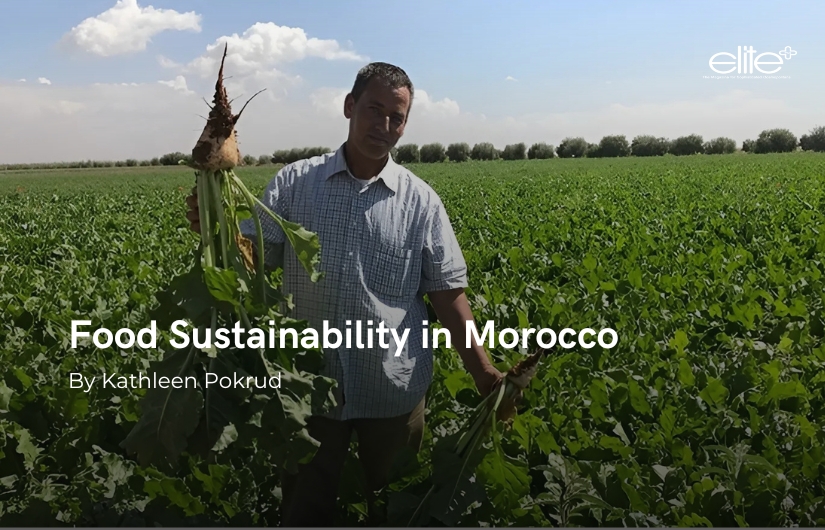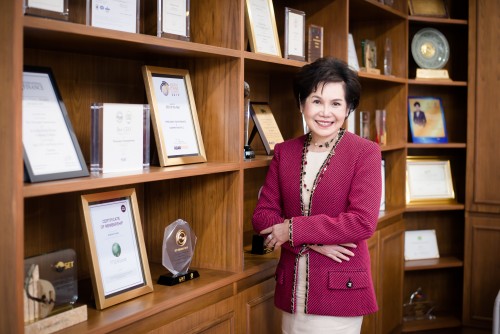Uzbek Cuisine: Diverse Flavours Of Settled And Nomadic Lifestyles
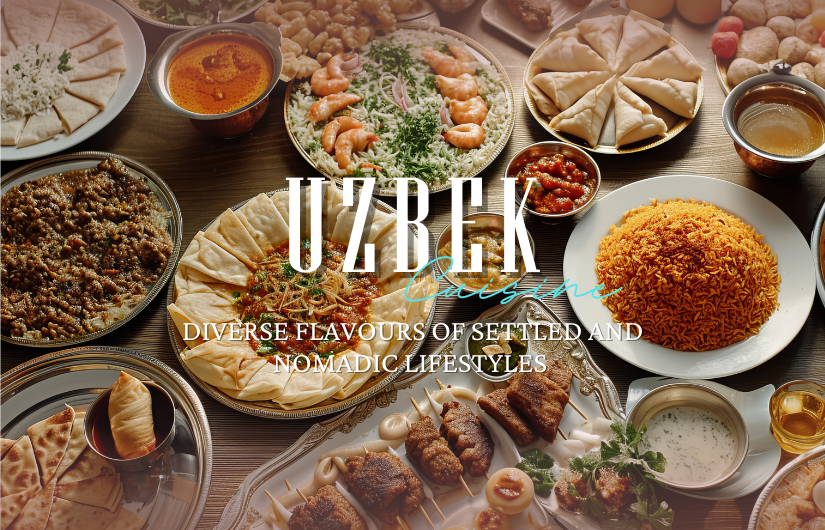
Uzbek Cuisine: Diverse flavours of settled and nomadic lifestyles
By Kathleen Pokrud
Photos by Jenny Chan and Teresa Biesty
Uzbek cuisine is a combination of various meats, grains and vegetables together with flavourful herbs and spices. The deep history of Uzbekistan dating back more than 3,000 years, is a blend of settled and nomadic lifestyles. I sat down with Mr Fakhriddin Sultanov, Consul-General of the Republic of Uzbekistan in Bangkok, to learn about the culinary story of this Central Asian country.
Mr Sultanov began, “The rapid development of our territories began with the opening of the Great Silk Road. Caravans of camels began to pass through the country, accompanied by a large retinue of merchants, drivers and guards, and their journey was long and far. Caravanserai all along the route places to rest for travellers, and catering became one of their most important tasks.
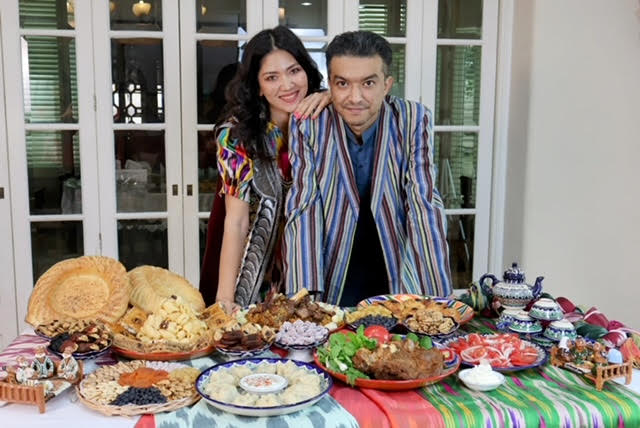
“Meanwhile, the culinary traditions and culture of these travellers have been preserved while relations with neighbouring peoples has had a profound impact on the variety and richness of the food. Uzbek cuisine now comprises wonderful traditions in the preparation of all kinds of dishes: meat, soups, baked and confectionery products, salads and drinks.”
Mr Sultanov proudly shared, “In 2018, Uzbek cuisine was recognized as the most delicious in the world with voting results published by the National Geographic Traveler Awards. The survey selected the best tourist destinations, and Uzbekistan was top in ‘Gastronomic Tourism’.”
He then went on, “Uzbek cuisine has largely grown based on Asian traditions and recipes. The most popular meat is mutton, but beef and horse meat are also used in large quantities. An example is the classic pilaf recipe, with one portion of meat to one portion of rice.
“Oil is used abundantly, with cottonseed the most popular. It is not customary to cook classic dishes spicy, but herbs and spices such as cumin, barberry, coriander, sesame, dill and basil are widely used. Special fermented milk or yogurt products are often used as a component of salads.
“The specific ingredient in soups (shurpa) is cereal — mash (a type of bean), along with jugara (sorghum), rice or corn. Meat dishes are almost always prepared with onions in proportion to meat much larger than in European cuisine. When preparing minced meat for dumplings, the usual recipe is two or three parts onion to one part meat.
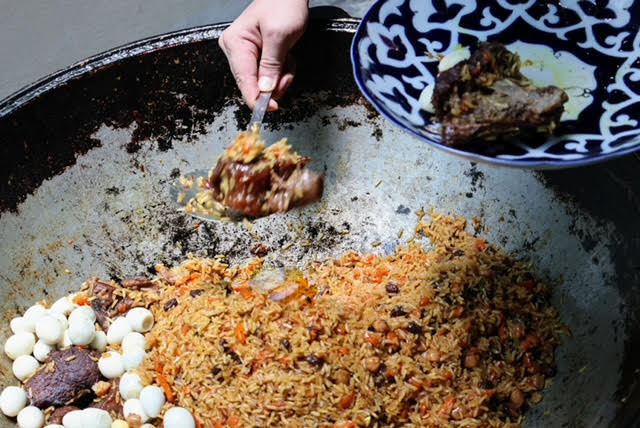
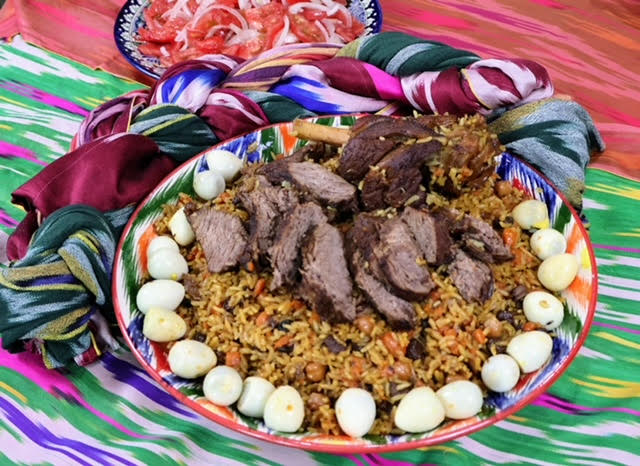
“One of our most popular and well-known dishes is pilaf. Uzbek and Tajik cuisines are characterized by the joint cooking of meat and grain, most often rice. Fish and fatty poultry are not popular in Uzbek cuisine, due to the county’s geographical location.”
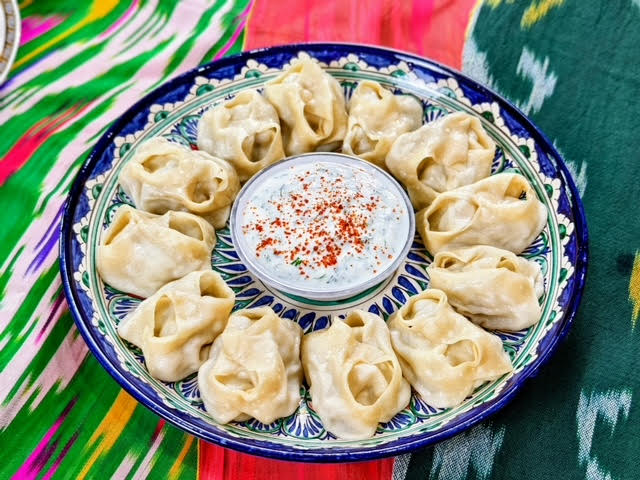
Mr Sultanov admitted that many Uzbek dishes have complicated recipes and requires many years to develop the proper culinary skills. Manti dumplings (chuchvara) are formed by hand while Sumalak is cooked over low heat for more than 10 hours. At the same time, the preparatory stage for wheat germination may take several days.
“Uzbek cuisine adheres to certain restrictions in accordance with Islamic tradition. Therefore, pork in any form is prohibited. Significant restrictions on the order and time of meals occur during the holy month of Ramadan and related fasting. Many dishes have their own traditions going back to ancient times. They are largely related to the sacred attitude towards food and products as animate beings, which must be treated with due respect.
“Uzbeks have a particularly respectful attitude towards bread; many traditions are closely related to their ingredients such as sourdough. Flatbread must be placed ‘face up’ on a table. Feasts in Uzbekistan meals will usually feature only an even number of breads except for events of mourning when they will be odd in number.
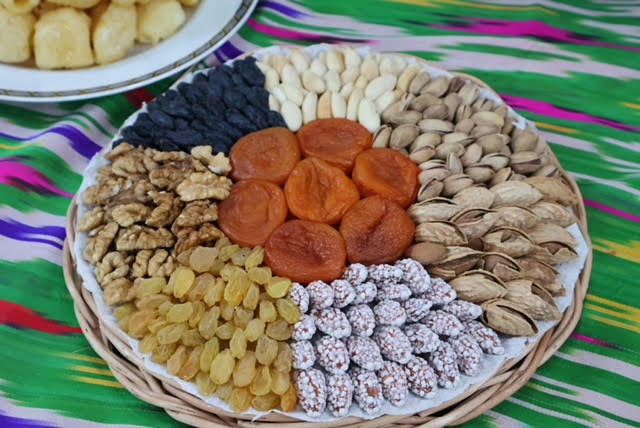
“Traditionally, important events, like a wedding and a wake, will include pilaf, usually prepared at night and served early in the morning. The recipe for ‘festive pilaf’ for an Uzbek wedding will include chickpeas, raisins and various spices. As one of the most famous Uzbek customs, this plays an important role in relationships in modern Uzbekistan. To this day, it is customary to eat pilaf with your hands, although it requires some skill.
“Long-standing traditions are associated with the preparation of the Sumalak ritual dish from sprouted wheat, which should be boiled in early spring before sowing. It is often cooked in large cauldrons on the streets during the Navruz holiday. This dish, which is rare in the analogue of the cuisines of other nations, resembles jam in appearance and is considered very useful for the gastrointestinal tract and strengthening immunity.”
There are significant differences between regional Uzbek cuisines. Mr Sultanov highlighted, “In the north, pilaf and dough dishes are considered the main foods. In the south, preference is given to multicomponent dishes while in the Ferghana Valley, darker fried pilaf is prepared compared to the fried pilaf in Tashkent.”
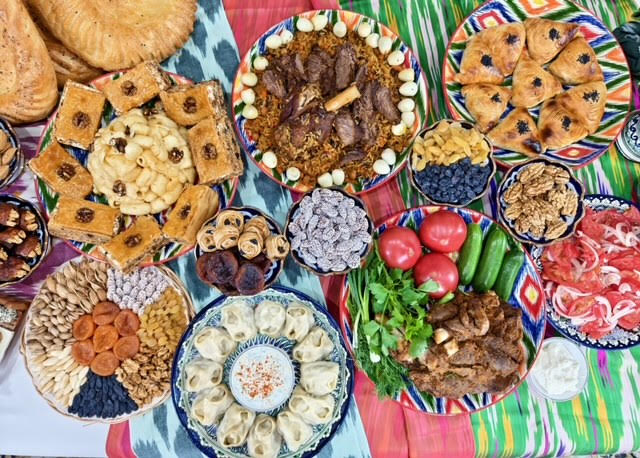
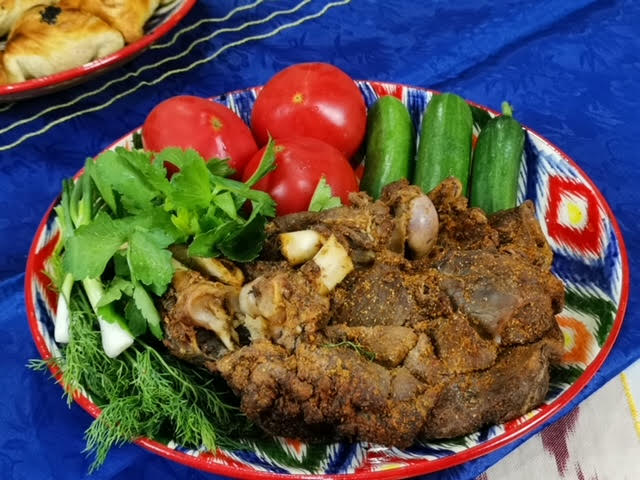
“Uzbek food is one of the most diverse and colourful cuisines in the world. As the territory of modern Uzbekistan was inhabited by many ethnic groups in the past, our culinary customs have been layered over many years. Largely due to the Silk Road, the culinary tradition of Uzbekistan consists of a mixture of East and West and has been greatly influenced by natural conditions. Amazing fruits and vegetables grown under the gentle eastern sun are important components of Uzbek cuisine.
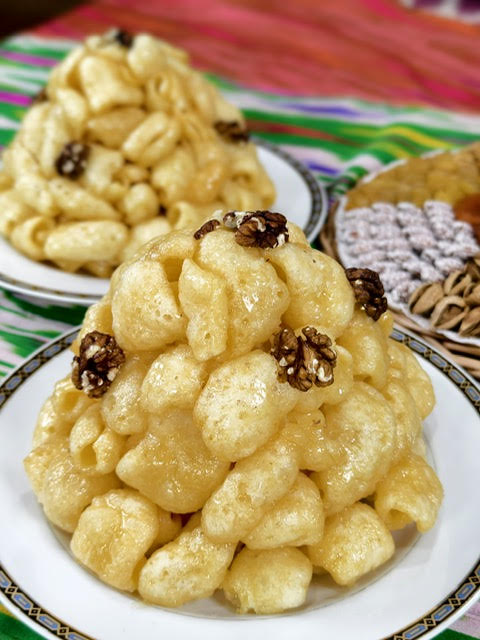
“Unlike our nomadic neighbours, the Uzbek people have had a solid and settled civilization for many centuries. Between deserts and mountains, in oases and fertile valleys, people learned to grow grain and tame cattle. One of the main factors revealing the peculiarities of Uzbek national cuisine is the cooking technology and recipe of dishes dictated by regional customs and traditions.
“The seasons, especially winter and summer, have had a strong impact on the composition of the meals. Uzbek cuisine has dishes that are prepared in a certain season, for example, in spring there is radish salad with sour cream, dumplings with herbs and pilaf with cabbage rolls made from grape leaves. Summer dishes are sour milk soup with herbs and shish kebab with tomatoes. In autumn, quail soup, manti with potatoes or fried meat are served. Heavier winter dishes are pilaf with mutton fat, lamb kebab and various fruits preserved for the winter, jams, compotes, pickles, marinades.”
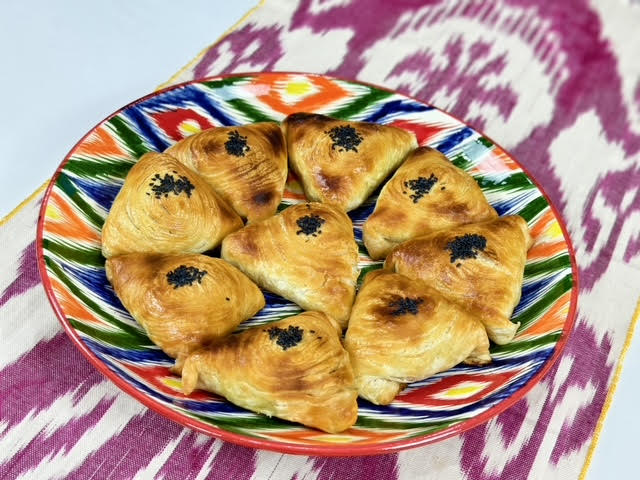
As our interview drew to a close, Mr Sultanov emphasized, “To enjoy the most delicious pilaf in the world, with succulent charcoal, tandoor-kebab, spicy lagman or crispy samsa, please come and visit Uzbekistan!”
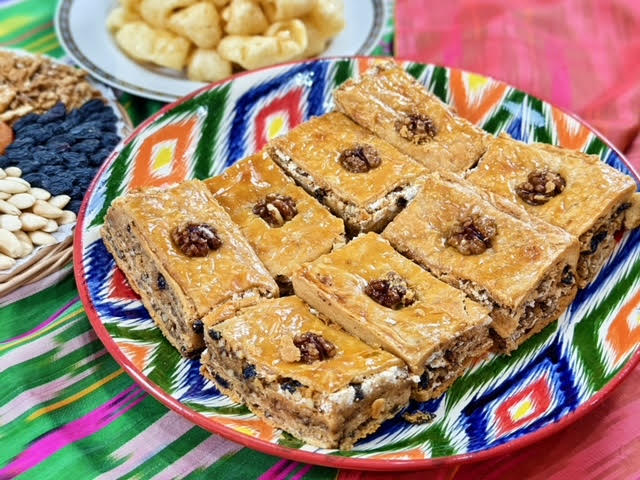
Photo Cover by: Freepik

Kathleen Pokrud 141 Posts
In the business community, she serves on the Board of Directors with the Thai-Hong Kong Trade Association. Kathy is on the Thailand Tatler Magazine Expat Society The 200 List. She is the Honorary Columnist and contributing writer to a few leading English magazines. She and her husband, RADM Dr Boonyarit Pokrud have one son who is currently based in Boston, USA.






